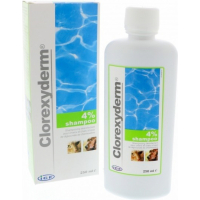Chlorhexidine is the generic version of Nolvasan. It’s an antiseptic and antimicrobial disinfectant which provides fast acting activity against a wide range of micro-organisms, especially against those commonly present on the skin such as bacteria, fungi, ringworm and yeast. Directions: Add ounce of chlorhexidine to ounces of water.

These compounds are often used as disinfectants for inanimate objects and as antiseptics for cleaning skin and wounds. These are relatively nontoxic to the skin. Some chlorhexidine products also contain alcohol, and these are superior to those just containing chlorhexidine. It doesn’t cause harm in reptiles that I have heard about.
For moderate wounds, stick with a general antiseptic (betadine, chlorhexidine ) to clean the wound if it isn’t too deep, and then use an ointment like classic Neosporin (without pain killers) or even Vaseline to keep the area moist and keep germs out. Today we share with you our top three picks for reptile disinfectants for reptile enclosures and decor, and why we use each one! Aids in treatment of yellow fungus disease and mouth rot in reptiles, or makes a great daily sanitizer. It may be used both to disinfect the skin of the patient and the hands of the healthcare providers.
Noted for a wide variety of symptoms, it typically presents as cheesy yellow or yellowy-gray plaques in the soft gum tissue in the mouth, with erythema and increased salivation. Keep out of reach of children. Avoid contact with eyes and mucous membranes. This product is not to be used in ears. If contact is made, flush immediately and thoroughly with clean water.
This is probably one of the most frequently asked questions, yet practices seem to be divided between the Betadine clinics and the chlorhex hospitals. Based on a non-representative sample, my impression is that there are far more practices that use chlorhexidine to scrub patients. When quizze few people even.
A cozy place for anyone who loves cold-blooded creatures of the world. The administration of analgesics before and after surgery should be considered in all reptile patients. The behavioral response to pain of most reptiles cannot be equated to that in mammalian patients: reptiles that do not display the clinical signs associated with pain in mammals should not be assumed to be pain-free.
Does anybody have an understanding for chemicals? Is this version of chlorhexidine harmful to my reptiles ? This is the same stuff veterinarians use to irrigate wounds and is even used as a mouthwash for animals and people. There are a number of forms – the most common for veterinary use are chlorhexidine diacetate (Nolvasan) and chlorhexidine gluconate (generic versions sold by other manufacturers). These same bacteria can cause mouth rot in other reptiles and lizards, too, so fortunately for your snake, there are quite a few ways that you can safely treat it.
How Do Snakes Get Mouth Rot? Mouth rot normally starts when a snake breaks a tooth. The wound left behind after a tooth breaks off then becomes infected. You can find it under the brand name Hibiclens at most pharmacies.
It is bactericidal and bacteriostatic. We love this anti-bacterial, anti-fungal cleaner because it is easy to use and non-toxic to our reptiles. Low concentration products sold over-the-counter do not typically cause serious problems, but people can have adverse effects and allergic reactions even with normal use.
No comments:
Post a Comment
Note: Only a member of this blog may post a comment.